Thushara D. Abhayapala
Multiple Speaker Separation from Noisy Sources in Reverberant Rooms using Relative Transfer Matrix
Mar 12, 2025



Abstract:Separation of simultaneously active multiple speakers is a difficult task in environments with strong reverberation and many background noise sources. This paper uses the relative transfer matrix (ReTM), a generalization of the relative transfer function of a room, to propose a simple yet novel approach for separating concurrent speakers using noisy multichannel microphone recordings. The proposed method (i) allows multiple speech and background noise sources, (ii) includes reverberation, (iii) does not need the knowledge of the locations of speech and noise sources nor microphone locations and their relative geometry, and (iv) uses relatively small segment of recordings for training. We illustrate the speech source separation capability with improved intelligibility using a simulation study consisting of four speakers in the presence of three noise sources in a reverberant room. We also show the applicability of the method in a practical experiment in a real room.
Point Neuron Learning: A New Physics-Informed Neural Network Architecture
Aug 30, 2024Abstract:Machine learning and neural networks have advanced numerous research domains, but challenges such as large training data requirements and inconsistent model performance hinder their application in certain scientific problems. To overcome these challenges, researchers have investigated integrating physics principles into machine learning models, mainly through: (i) physics-guided loss functions, generally termed as physics-informed neural networks, and (ii) physics-guided architectural design. While both approaches have demonstrated success across multiple scientific disciplines, they have limitations including being trapped to a local minimum, poor interpretability, and restricted generalizability. This paper proposes a new physics-informed neural network (PINN) architecture that combines the strengths of both approaches by embedding the fundamental solution of the wave equation into the network architecture, enabling the learned model to strictly satisfy the wave equation. The proposed point neuron learning method can model an arbitrary sound field based on microphone observations without any dataset. Compared to other PINN methods, our approach directly processes complex numbers and offers better interpretability and generalizability. We evaluate the versatility of the proposed architecture by a sound field reconstruction problem in a reverberant environment. Results indicate that the point neuron method outperforms two competing methods and can efficiently handle noisy environments with sparse microphone observations.
Source Localization by Multidimensional Steered Response Power Mapping with Sparse Bayesian Learning
May 20, 2024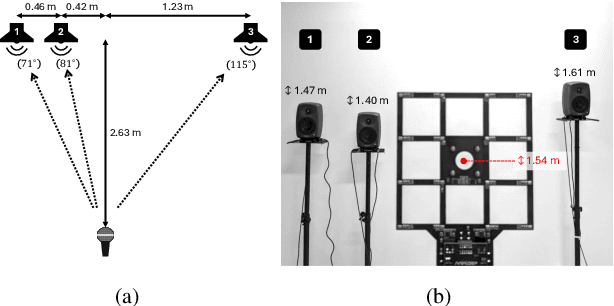
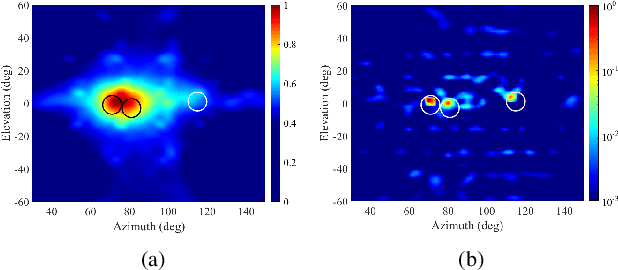
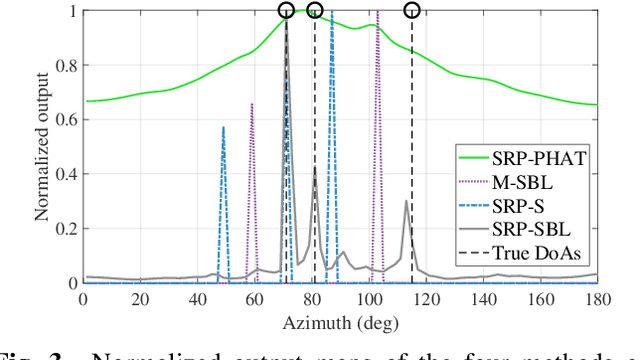
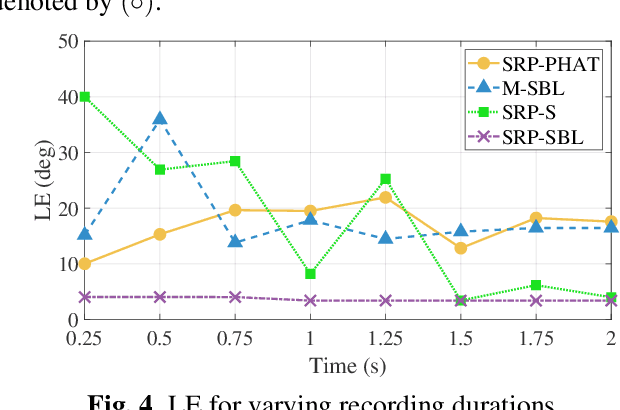
Abstract:We propose an advance Steered Response Power (SRP) method for localizing multiple sources. While conventional SRP performs well in adverse conditions, it remains to struggle in scenarios with closely neighboring sources, resulting in ambiguous SRP maps. We address this issue by applying sparsity optimization in SRP to obtain high-resolution maps. Our approach represents SRP maps as multidimensional matrices to preserve time-frequency information and further improve performance in unfavorable conditions. We use multi-dictionary Sparse Bayesian Learning to localize sources without needing prior knowledge of their quantity. We validate our method through practical experiments with a 16-channel planar microphone array and compare against three other SRP and sparsity-based methods. Our multidimensional SRP approach outperforms conventional SRP and the current state-of-the-art sparse SRP methods for localizing closely spaced sources in a reverberant room.
Sound field reconstruction using neural processes with dynamic kernels
Nov 09, 2023Abstract:Accurately representing the sound field with the high spatial resolution is critical for immersive and interactive sound field reproduction technology. To minimize experimental effort, data-driven methods have been proposed to estimate sound fields from a small number of discrete observations. In particular, kernel-based methods using Gaussian Processes (GPs) with a covariance function to model spatial correlations have been used for sound field reconstruction. However, these methods have limitations due to the fixed kernels having limited expressiveness, requiring manual identification of optimal kernels for different sound fields. In this work, we propose a new approach that parameterizes GPs using a deep neural network based on Neural Processes (NPs) to reconstruct the magnitude of the sound field. This method has the advantage of dynamically learning kernels from simulated data using an attention mechanism, allowing for greater flexibility and adaptability to the acoustic properties of the sound field. Numerical experiments demonstrate that our proposed approach outperforms current methods in reconstructing accuracy, providing a promising alternative for sound field reconstruction.
Circumvent spherical Bessel function nulls for open sphere microphone arrays with physics informed neural network
Aug 01, 2023Abstract:Open sphere microphone arrays (OSMAs) are simple to design and do not introduce scattering fields, and thus can be advantageous than other arrays for implementing spatial acoustic algorithms under spherical model decomposition. However, an OSMA suffers from spherical Bessel function nulls which make it hard to obtain some sound field coefficients at certain frequencies. This paper proposes to assist an OSMA for sound field analysis with physics informed neural network (PINN). A PINN models the measurement of an OSMA and predicts the sound field on another sphere whose radius is different from that of the OSMA. Thanks to the fact that spherical Bessel function nulls vary with radius, the sound field coefficients which are hard to obtain based on the OSMA measurement directly can be obtained based on the prediction. Simulations confirm the effectiveness of this approach and compare it with the rigid sphere approach.
Physics Informed Neural Network for Head-Related Transfer Function Upsampling
Jul 27, 2023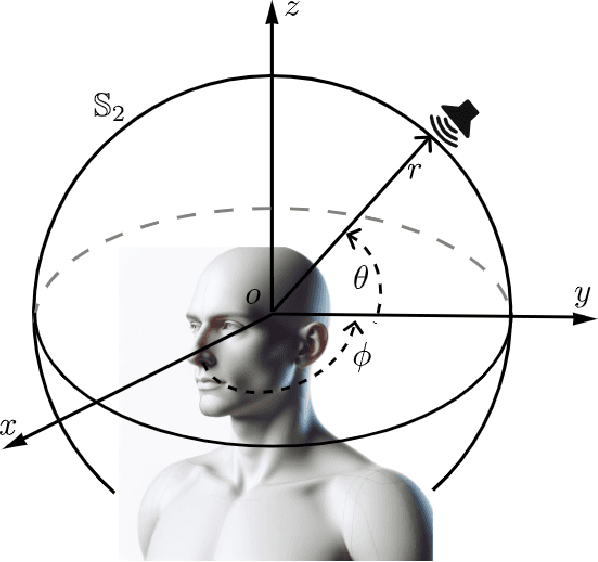
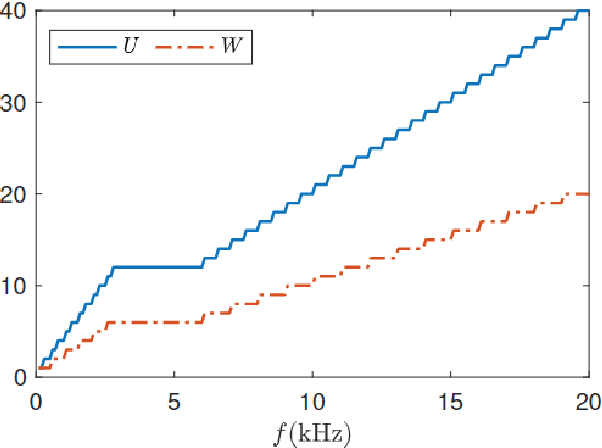

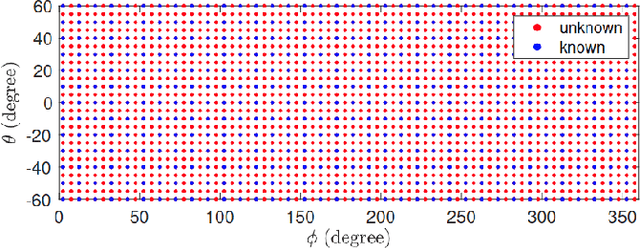
Abstract:Head-related transfer functions (HRTFs) capture the spatial and spectral features that a person uses to localize sound sources in space and thus are vital for creating an authentic virtual acoustic experience. However, practical HRTF measurement systems can only provide an incomplete measurement of a person's HRTFs, and this necessitates HRTF upsampling. This paper proposes a physics-informed neural network (PINN) method for HRTF upsampling. Unlike other upsampling methods which are based on the measured HRTFs only, the PINN method exploits the Helmholtz equation as additional information for constraining the upsampling process. This helps the PINN method to generate physically amiable upsamplings which generalize beyond the measured HRTFs. Furthermore, the width and the depth of the PINN are set according to the dimensionality of HRTFs under spherical harmonic (SH) decomposition and the Helmholtz equation. This makes the PINN have an appropriate level of expressiveness and thus does not suffer from under-fitting and over-fitting problems. Numerical experiments confirm the superior performance of the PINN method for HRTF upsampling in both interpolation and extrapolation scenarios over several datasets in comparison with the SH methods.
GMM based multi-stage Wiener filtering for low SNR speech enhancement
Jun 19, 2022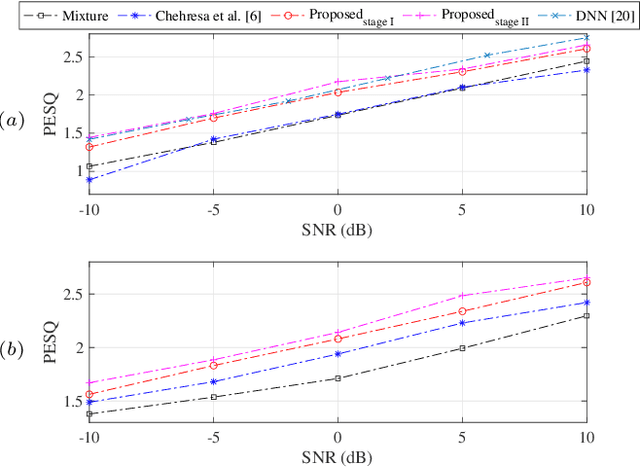
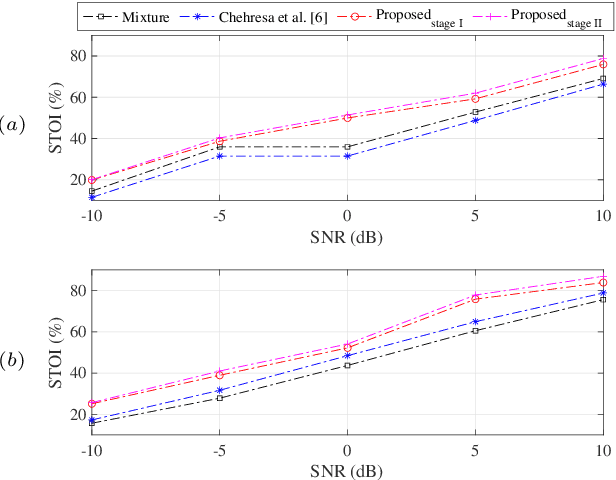
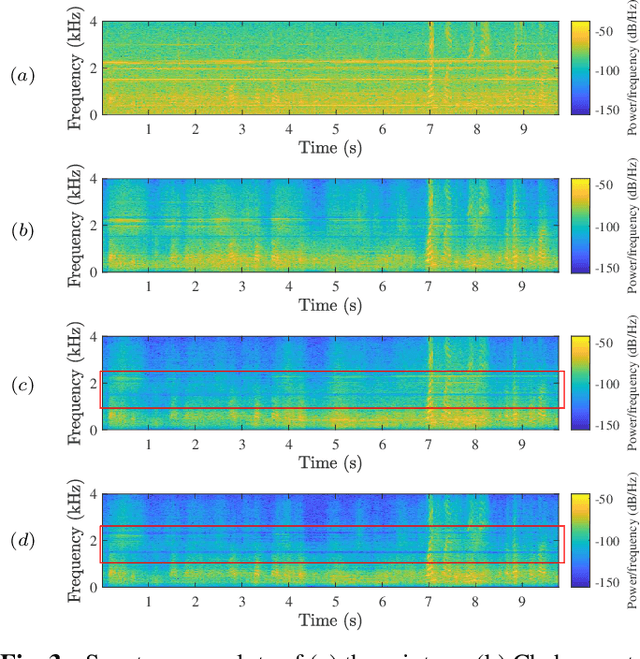
Abstract:This paper proposes a single-channel speech enhancement method to reduce the noise and enhance speech at low signal-to-noise ratio (SNR) levels and non-stationary noise conditions. Specifically, we focus on modeling the noise using a Gaussian mixture model (GMM) based on a multi-stage process with a parametric Wiener filter. The proposed noise model estimates a more accurate noise power spectral density (PSD), and allows for better generalization under various noise conditions compared to traditional Wiener filtering methods. Simulations show that the proposed approach can achieve better performance in terms of speech quality (PESQ) and intelligibility (STOI) at low SNR levels.
A time-domain nearfield frequency-invariant beamforming method
May 18, 2021

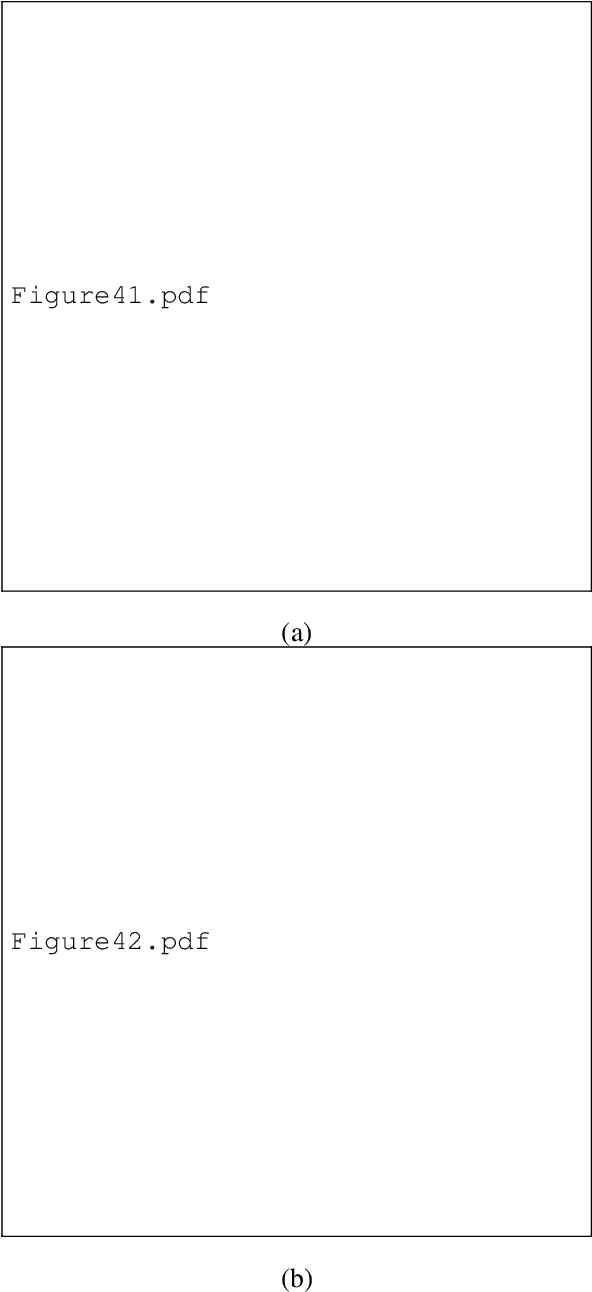

Abstract:Most existing beamforming methods are frequency-domain methods, and are designed for enhancing a farfield target source over a narrow frequency band. They have found diverse applications and are still under active development. However, they struggle to achieve desired performance if the target source is in the nearfield with a broadband output. This paper proposes a time-domain nearfield frequency-invariant beamforming method. The time-domain implementation makes the beamformer output suitable for further use by real-time applications, the nearfield focusing enables the beamforming method to suppress an interference even if it is in the same direction as the target source, and the frequency-invariant beampattern makes the beamforming method suitable for enhancing the target source over a broad frequency band. These three features together make the beamforming method suitable for real-time broadband nearfield source enhancement, such as speech enhancement in room environments. The beamformer design process is separated from the sound field measurement process, and such that a designed beamformer applies to sensor arrays with various structures. The beamformer design process is further simplified by decomposing it into several independent parts. Simulation results confirm the performance of the proposed beamforming method.
 Add to Chrome
Add to Chrome Add to Firefox
Add to Firefox Add to Edge
Add to Edge